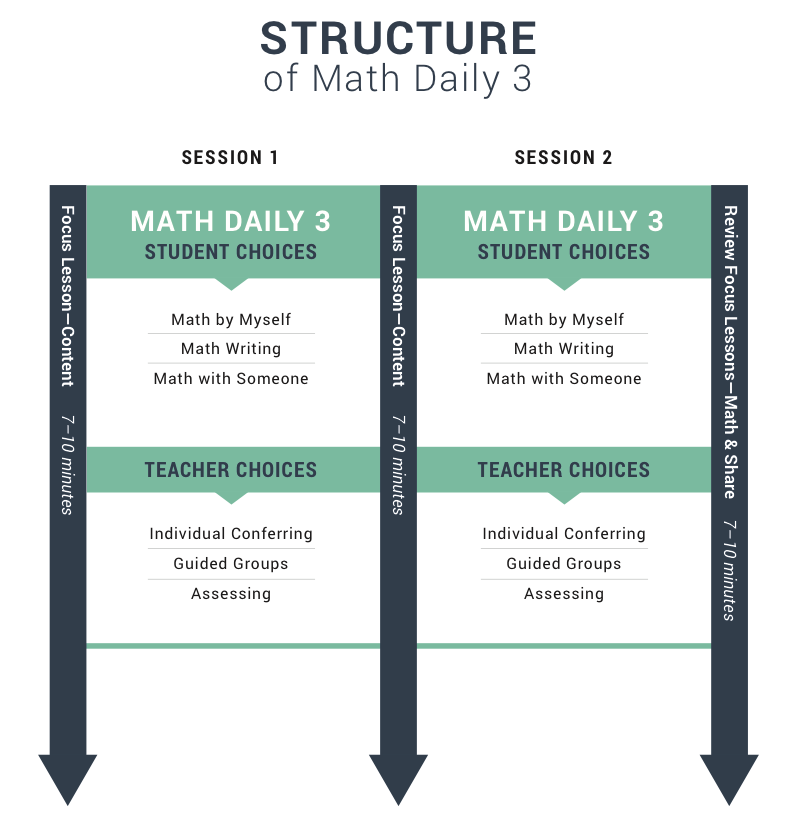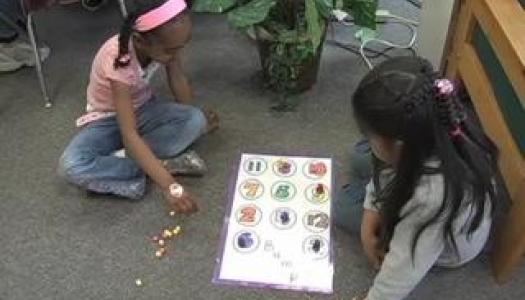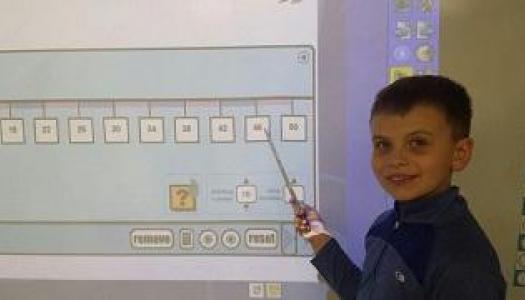Math Focus Lesson Layout
Join Our Community
Access this resource now. Get up to three resources every month for free.
Choose from thousands of articles, lessons, guides, videos, and printables.
 Similar to the structure of The Daily 5, Math Daily 3 includes three bursts of instruction, two or three independent work times (depending on the length of the math block and student' stamina), with two being shown in the figure above, and a quick sharing and review of what was learned that day.
Similar to the structure of The Daily 5, Math Daily 3 includes three bursts of instruction, two or three independent work times (depending on the length of the math block and student' stamina), with two being shown in the figure above, and a quick sharing and review of what was learned that day.
The main lesson for the day comes from our math curriculum. However, these lessons are typically long and don't match up with current brain research, so we break them into manageable chunks to be taught during three whole-group focus lessons. These short chunks of instructional time take place between rounds of Math Daily 3. This requires narrowing the focus of instruction to the essential components of the lesson and what is really necessary learning for students.
Similar to Daily 5, Math Daily 3 combines the focus lessons, which are kept short based on brain research, with a gradual release of responsibility model. The three short focus lessons often cover the same concept and focus on teaching it:
I Do /We Do /You Do
- I Do—the explicit teaching of the math concept through teacher explanation and modeling.
- We Do—allows time for guided practice of the same concept taught in lesson one.
- You Do—students work on a problem that reflects the lesson focus for the day. This is done either independently or with an elbow buddy. Students share their thinking and strategy either with a partner or with the whole group.
It is common for teachers to teach one lengthy, whole-group lesson and give an assignment. This form of instruction goes directly from "I show you" to "Now you do it," without allowing for guided practice. Occasionally teachers will include guided practice, but the lesson is still too long in format, ignoring what we know about brain research in teaching and learning. Using Math Daily 3, our focus lessons follow the gradual release of responsibility model while incorporating the brain and body breaks required for optimal learning.







